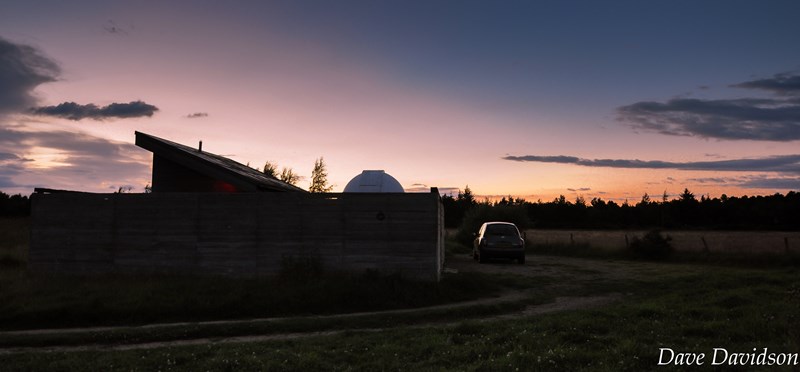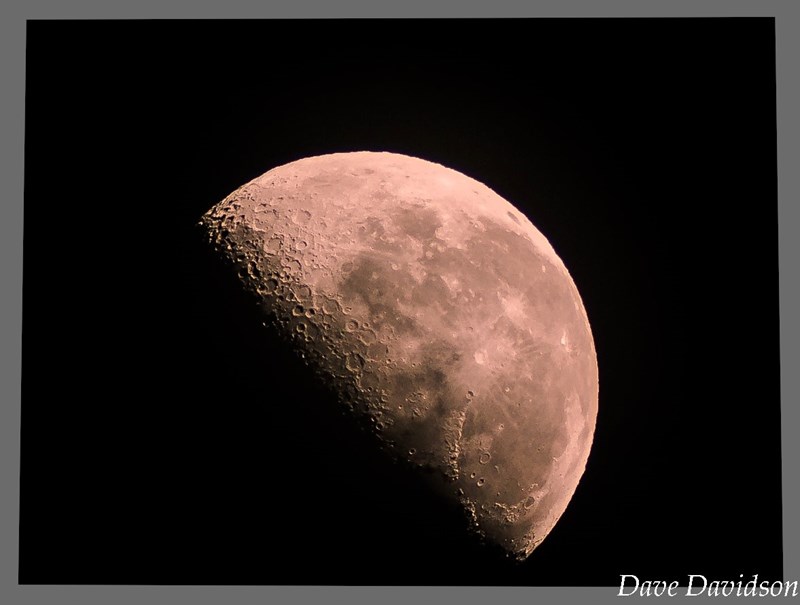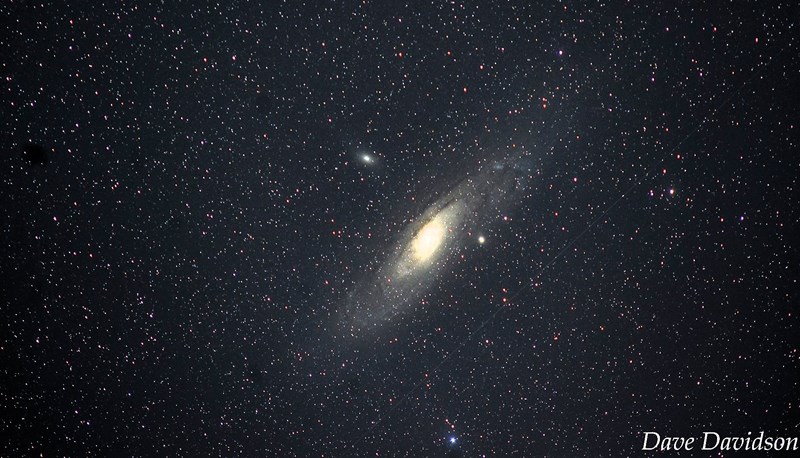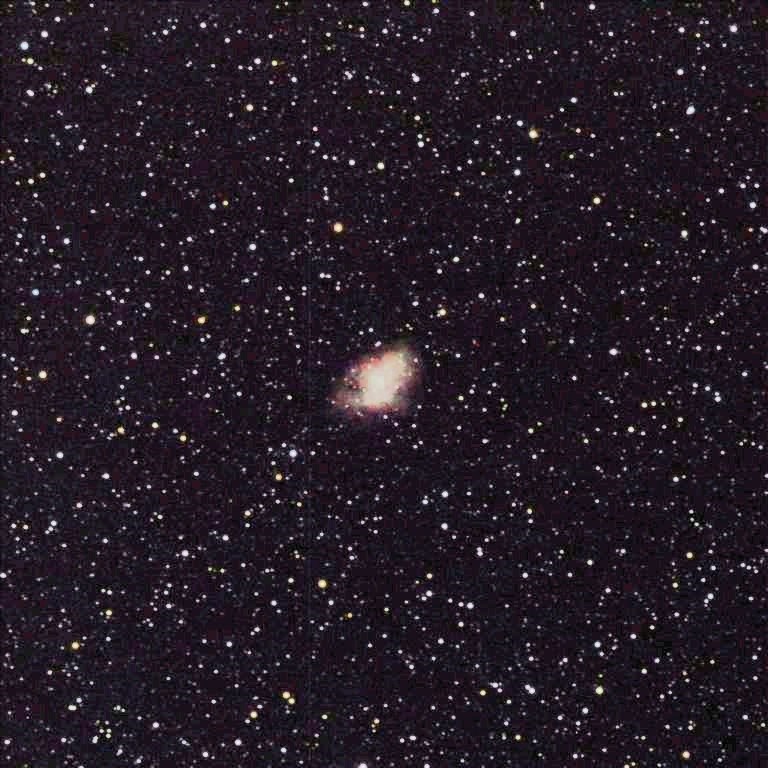LORD OF THE RINGS
Added on 25 October 2023
LORD of the RINGS
"Then Varda went forth from the council and she looked out from the height of Taniquetil and beheld the darkness of Middle Earth beneath the innumerable stars, faint and far."
On the night of Sunday the 22nd of October, like Varda, we looked out from Culloden and beheld the light pollution of Inverness beneath the innumerable stars, and yet, despite the modern malaise of street lights we had a really memorable night of starwatching. The 'council of elves' tonight were Eric Walker, Paul Moffat, Ruth Dunster and me. The early evening twilight was rapidly fading as we arrived at the observatory and the sky to the West was streaked with high, dark clouds fanning out from the horizon until nearly overhead, mixed in with a faint haze, like a veil draped across the entire hemisphere.

Here and there, one or two of the brighter stars began to show in the darkening sky and encouraged by this welcome sight we set up our telescopes on the grassy square outside the observatory compound. Paul had his Starfield 102 ed refractor on an AVX goto mount, I had an 8 inch reflector on an EQ5 mount and Eric had an 90mm short-tube ED refractor on an EQ2 mount. Inspired by a recent 'spotlight' talk by Anthony McEwan at one of the Club meetings about 'Small Telescopes and Visual Observing', Eric was going back to his roots and foregoing the delights of 'goto' in favour of 'star-hopping'; an art practised by purists or those that cannot afford the luxury of computer-controlled equipment! This is the difference between 'seine - netting' fish or deceiving them with an artificial fly at the end of a gossamer thread cast into a crystal chalk stream. The satisfaction derived from finding a faint nebula or galaxy amid the maze of stars on a dark night with only a wily knowlege of their location and a hand driven telescope cannot be overstated. As atavistic as a hunter with a bow and arrow, like David against Goliath, or searching for that needle in the proverbial haystack. Ruth and I shared the 8 inch reflector and here too we were star-hopping.
As swiftly as the darkness set in, the earlier cloud cover evaporated. The stars were now jewel-like and myriad in the sky above us as the golden first-quarter Moon began to rise above the distant hills to the south east. Six degrees below the ecliptic, the Moon would only graze the southern horizon for an hour or so and set again, allowing us the chance to look at the Moon for a while and then for the rest of the night have a pristine, dark sky to see the faintest of the tiny grey specks that litter the constellations of late October.

Ruth had not seen the stars with a telescope before, though she was familiar with the layout of the night sky so I gave her a 'tour' of some of the more prominent 'deep-sky' objects, like the vast array of stars that is M13 in Hercules, the mists of M31 in Andromeda,

the sheer wonder of Alberio and its dramatic contrast of colours; a sight that never jades even for those that have seen it a thousand times! That brilliance of straw yellow and sapphire blue at the beak of Cygus the Swan is simply breathtaking and always elicits a "wow!!" when seen for the first time. (I still go "wow!!" and I have seen it a thousand times!). We saw the rings around Saturn, the bands on the mighty Jupiter and when Ruth saw one of the moons disappear against the face of the planet as she watched, her excitement was hard to contain! To see the solar system in motion in real time with your own eyes is one of Nature's gifts to us. Seeing, as always, is so different to reading about things in books or looking at glossy photos; what might read as mundane becomes a life changing moment when viewed in reality. It is the very reason that we stand in a field on a cold, wind-less night and peer into the tiny aperture of polished glass that opens the portal to true wonder.
After a while I left Ruth to play around with the telescope and mine for her own gems while I consulted with the other elves to see what they had uncovered from the depths of space. Their treasure chests were filling nicely with a fine list of galaxies and nebulas.
It was a cold night and as the night wore on we were starting to feel the chilling effects in our bones so we elected to have a break, have some coffee in the warmth of the observatory and let the Moon set before continuing. This we did and as our collective marrow thawed under the influence of the hot drinks and the fan-heater we shared our discoveries, philosophized about the origins of the Moon and the mystery of the craters, the extent of the gulf of space and the unthinkable distances involved that simply overload the human brain and turn it to the consistency of porridge. Perhaps I should speak for myself in this case but I expect I am not alone here.
Rejuvenated, we returned outdoors to find the sky as dark and clear as it could be for the time of year. The Milky Way, now that the Moon had gone, was a glowing arch stretching from east to west, the stars, starting out from the blackness in sharp contrast, the air steady and crisp with a faint dew. Now we could search for the more elusive objects and we dotted back and forth between the three telescopes to look at what each of us had found amid our new and favourable surroundings. The Crab Nebula (M1) was a real fascination and we tried different eyepieces, filters etc to get a better look and I think that a 19mm extra flat eyepice with an OIII filter gave us the most interesting view, clearly showing us the shape of the old supernova remnant, albeit a small and faint view.

Paul found the Veil Nebula in Cygnus and we all 'wow-ed' at that one! It still seems fantastical to me that it is possible to see this awesome shape in such a small telescope but there it was for all to see and testament I guess to the quality of these Extra dispersion glass optics.
Eric was simply 'in his element' tonight using his skills at star-hopping and his excitement was shared by us all. There is always a new and fresh way to view the night sky; make a study of the Moon, search out the double stars, try and find the faintest nebula that your telescope will allow, make your own star maps, and star-hopping is easily at the top of any list of things to do! and Eric was, to keep the analogy, 'Lord of the Rings' tonight in that department!
Finally, the witching time came around and we packed our things away for our journey home. We were tired and cold but ecstatic too with the adventure we had had under the stars. As always on nights like this it is more than just looking at the stars; it is the company of friends, the shared experience and the spiritual uplift that comes from standing together as equals under the humbling immensity of the Universe. November looms on the horizon and new constellations will come into view, not the least of which is Orion the Hunter and as we said our goodbyes tonight the sword of Orion was kissing the hilltops to the East. Throughout the coming winter months as long as the stars are out and the clouds keep away there will likely be someone at the observatory so keep an eye out on the WhatsApp group, Facebook or the website for either planned or impromptu meetings at Culloden. Bring your telescope or take advantage of the big ones! 14 inch Cassegrain in the dome and the 12 inch newly refurbished and much easier to use (thank you Paul Moffat) Dobsonian.
Clear skies everyone and hope to see you soon.